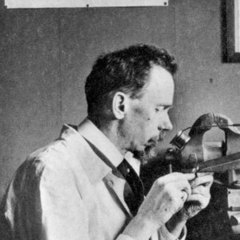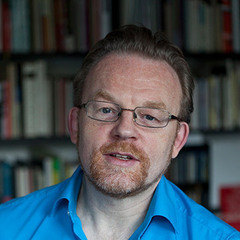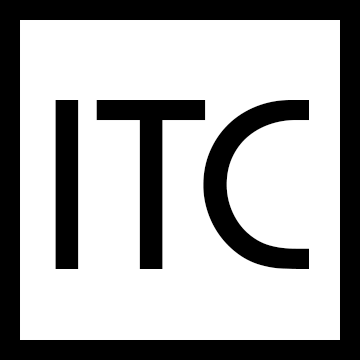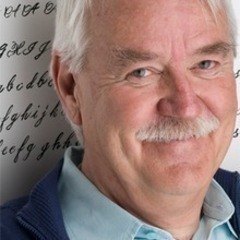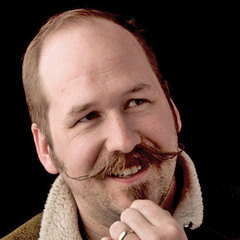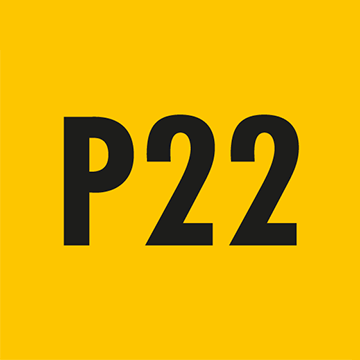Discover legacy content from FontShop.com, preserved for your reference.










The terms round and rounded are not defined as clearly as with or without serifs for example and yet both terms have been used in a variety of contexts both historically and today. The use of the term “round” in a typeface’s name can be misleading. A rather prominent case is Rund Grotesk, a sans serif face released by the German type foundry C. E. Weber in 1932. Here rund (round) merely refers to the fact that this typeface has roundish letterforms, in accordance with the geometric sans idea. However, apart from its almost perfect circle-like ‘O’ and some of its lower cases such as ‘a’, ‘b’ and ‘g’, Rund-Grotesk does not appear particularly round — at least not more than its contemporary Neuzeit-Grotesk. Another example from the same era is Kabel® Rundbuchstaben (literally round letters), a set of capital letters in two weights for display use to accompany Rudolf Koch’s Kabel (1928). Overall the Kabel Rundbuchstaben appear round in edges and corners, but strokes terminate on flat endings.


It would seem reasonable to distinguish between round, referring to types with completely round stroke endings (like a semi-circle attached at the end) and rounded to describe types that have rounded corners (defined with a certain radius), edges and transitions of bends and stems, etc. Two prominent typefaces that match this definition by name and design are FF DIN™ Round and FF Unit® Rounded. Unfortunately, however, there is no general consensus concerning this terminology, as demonstrated in the following examples.



Typefaces with round letter shapes have always been determined by tools to enable the cutting and milling of round edges. At the same time, such typefaces have been convincing solutions for technological challenges and eventually these solutions turned into trends. A look at tools, technology and trends shall reveal the complex universe of round and rounded type.
Trend: Origins in letterpress
The exact origin of this style is not entirely clear, but one of the earliest appearances is a wood type example with round corners documented in George F. Nesbitt’s 1838 type specimen book1. In the first half of the 19th century, wood type producers experimented with variations of one particular design (in this case gothic) to expand their repertoire. Letters were condensed, expanded or equipped with outlines or shades. Nesbitt’s Gothic Round Condensed was one of these variations. Over the course of history, many new designs grew out of the tools that were available at that time. Pantographically milling round edges was much easier than cutting sharp angles, especially in counter forms; therefore many new wood type variations were realized in the rounded style.


The first round typeface that appeared in Europe is attributed to Caslon in Great Britain during the 1850s2, a design that then became popular in the United States in the second half of the 19th century. One of the first rounded designs for foundry type in Germany is the schmale runde Grotesk (condensed round gothic) on display in a specimen issued in 1885 by Leipzig-based publisher and printer Julius Klinkhardt (who were also type founders after acquiring their competitor Scheltersche Gießerei in 1871). More than ten years later this design reappeared in another Klinkhardt specimen in larger sizes made from wood and brass.


By the 1910s many foundries in Germany began catching up with this new trend and produced their own respective interpretations. One of the first was Presse, also labeled Reklameschrift (advertising type), a bold face in imitation of a brush or chalk, collaboratively released by Bauer and Berthold. Another jointly produced typeface was Reklameschrift Herkules, issued around the same time, it was more like a brush imitation with capital swash characters. Berthold’s Billet followed in 1911, which looks much like a light version of Presse in the lowercase characters and figures, while the capital letters feature a different approach with curled terminals.

[link not found]
In 1912, three larger German foundries all released a style that one would describe as typewriter-like (but proportional) light slab serifs with round stroke endings: Bravour by Stempel, Linear Antiqua by Ludwig & Mayer and Glass Antiqua released by Genzsch & Heyse. These types were presented quite elaborately in their respective specimens and with its rather informal look this style became very popular in the years that followed. Berthold’s Berliner Grotesk features the same wobbly contours as seen in Glass Antiqua and joined the clique as a serif-less companion in 1913. In 1981, Erik Spiekermann proposed a phototype revival of Glass Antiqua to the International Typeface Corporation. Emphasizing its origin and look, Spiekermann suggested the name Teutonic Typewriter, but ultimately ITC® never produced the face. Digital versions of Glass Antiqua were created by Denis Masharov in 2011 (released with Google Fonts) and by Gert Wiescher in 2012 (available from MyFonts) who also equipped it with historic initials, borders and deco. Further representatives of that style are Epoche (Benjamin Krebs Nachf.) and JKA Antiqua (Julius Klinkhardt), while Corso (Stempel) and Femina (Bauer) — all four of them released in 1913 — seem to follow in Presse’s footsteps.



[link not found]
Many of these typefaces underwent extensions during the mid 1920s, foremost Bravour and Epoche, but in 1922 another round typeface followed that survived many of its contemporaries and successors: Cooper Black™. This old style serif typeface was designed by Oswald “Oz” Cooper and was initially released with Barnhart Brothers & Spindler, but the foundry closed down just ten years later and so sales were continued by the American Type Founders (ATF). Other versions of Cooper Black were and are available from a vast variety of font retailers; e.g. as Fette Cooper from Brüder Butter typefoundry in Dresden, Germany. Another extremely similar design, Pabst Extra Bold, could be used on the so-called All-Purpose Linotype (APL). Cooper Black still remains a milestone in type design even today. It never lost much of its charm and has reinvented itself again and again.


All of the types mentioned above were released decades ago, but even on the rare occasion when a new wooden alphabet is designed and produced today, it seems reasonable to equip it with rounded corners. Last year Erik Spiekermann designed his interpretation of Reklameschrift Block (without the wobbly contours) to be cut in wood by Hamilton Wood Type & Printing Museum in Wisconsin. Intended to minimize hand-finishing and to reduce production time, all corners (especially those in the counters) are round3. HWT Artz (named after retired Hamilton operator Dave Artz and in keeping with Spiekermann’s four letter font naming) was produced in 16, 20 and 40 cic exclusively for Spiekermann’s Berlin-based letterpress workshop P98a. A digital version, drawn by Spiekermann, revised by Ralph du Carrois and finished by Richard Kegler was released with P22 Type Foundry; any earnings go to the museum.
Tools: Pens and rulers
A very early German lettering example was discovered by Albert-Jan Pool in a so-called Vorlegeblatt für das Schriftzeichnen (tracing sheet for lettering) by C. Eduard Fetzer for architects, lithographers and sign makers, published with Stuttgart-based W. Nitzschke in 18714. The specimen describes how such letters can be constructed using ruler and compass guided by grid lines. In the second half of the 19th century children in Germany were taught how to handwrite such “block letters” using a round-nibbed pen (vs. a pointed nib, which came in handy when writing Kurrent)5. Alphabets resulting from this kind of lettering, also known as Gleichstrich-Grotesk (monolinear sans serif), consequently feature round stroke endings. New lettering instruction released by the Prussian Railways for their coaches in 1897 revealed a compressed round sans serif and gradually the use of such designs marked a new trend in public signage.

When Georg Bahr developed a lettering device equipped with elementary shapes he filled a small gap in the market that soon produced lettering rulers known as Bahrscher Normograph followed by Standardgraph to draw characters with a pen. The result of such lettering is very similar to that of handwriting with a round nib pen6. It seems to have suggested itself that the first alphabet issued by the Normenauschuss der Deutschen Industrie (Standardization Committee for German Industry), formed in 1916, was not their famous geometric DIN 1451, but DIN 16 in 1919, imitating cursive block letters and thus reflecting the zeitgeist7. The constructed alphabet DIN 1451, which comprised of three weights (wide, normal, condensed), followed in 1927. It found its famous digital equivalent in Albert-Jan Pool’s highly successful FF DIN™ (first released in 1995, FontShop’s bestseller for many years), that was equipped with a round companion in 2010.




[link not found]
Because designers love the primitiveness of industrial lettering, there was a trend in the 1990s to digitize old typewriter alphabets and stencils found in the attic or engraved letters discovered in the engine room of an abandoned factory. Most engraving machines cannot mill flat stroke endings, e.g. warning labels in Berlin underground stations therefore appear in DIN-related round letterforms. These vernacular letterings found their digital equivalents in pseudo-industrial typefaces such as FF Marten™ (Martin Wenzel, 1991), FF Isonorm® (Robert Kirchner, 1993) and FF Magda® Clean (Henning Krause, Cornel Windlin, Critzla, 1998).


Further reading
Pool, Albert-Jan/Ivo Gabrowitsch (ed.): FF DIN Round. Digital block letters. A brochure about the history of round sans serif typefaces and the development of FF DIN Round, Berlin 2010 [a digital edition is available online here
References
1. Kelly, Rob Roy: American wood type. 1828–1900. Notes on the evolution of decorated and large types, New York 1977, p. 101
2. Ibid., p. 305
3. Notes and photographs of the design process can be found on P22’s Behance account here
4. In: Pool, Albert-Jan/Ivo Gabrowitsch (ed.): FF DIN Round. Digital block letters. A brochure about the history of round sans serif typefaces and the development of FF DIN Round, Berlin 2010, p. 5
5. Ibid., p. 7
6. Ibid., p. 10 ff.
7. In 1928 DIN 16 even became available as foundry type. In a catalogue of the Spamer printing house it is listed by the name Dinorm Grotesk.
Trademark Attribution Notice
Kabel is a trademark of Monotype Imaging Inc. registered in the U.S. Patent and Trademark Office and may be registered in certain other jurisdictions. ITC is a trademark of Monotype ITC Inc. registered in the U.S. Patent and Trademark Office and may be registered in certain other jurisdictions. Cooper Black is a trademark of The Monotype Corporation and may be registered in certain jurisdictions. FF, Unit, Isonorm and Magda are trademarks of Monotype GmbH registered in the U.S. Patent and Trademark Office and may be registered in certain other jurisdictions. Marten and DIN are trademarks of Monotype GmbH and may be registered in certain jurisdictions. All other trademarks are the property of their respective owners.
